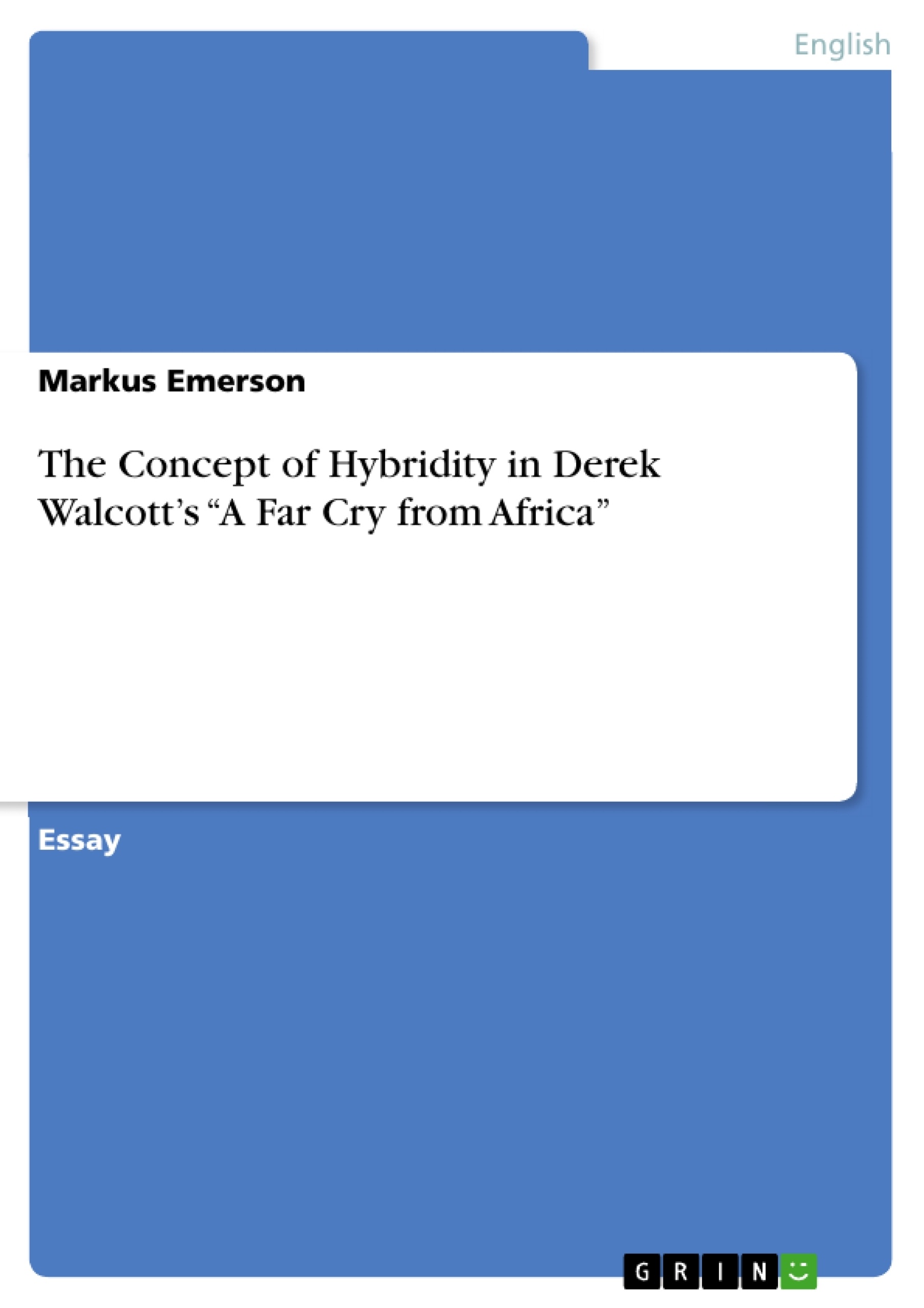One of the central concepts in the work of post-colonial writer Homi Bhabha is that of ‘hybridity’. In the Introduction to The Location of Culture, Bhabha reflects on aspects of hybridity in the context of the ‘in-between’ of cultures. The essay will briefly discuss a passage taken out of this book in order to get a better idea about the significance of the term hybridity. Afterwards, the idea of hybridity will be transferred to Derek Walcott’s poem “A Far Cry from Africa”.
“The stairwell as liminal space, in-between the designations of identity, becomes the process of symbolic interaction […]. This interstitial passage between fixed identifications opens up a possibility of a cultural hybridity that entertains difference without an assumed or imposed hierarchy. ” (Bhabha 2004: 3)
The term ‘hybridity’, which is a very frequently used construct in post-colonial studies, seeks to explain the melting of different cultural ideas into one entity.
Table of Contents
- The concept of hybridity in Derek Walcott’s “A Far Cry from Africa”
- The idea of Hybridity in Bhabha’s work
- The meaning of the “in-between” in culture
- Hybridity as a dynamic construct
- Derek Walcott as a cultural hybrid
- Cultural exchange and the “cry” for a comprehensible identity
- The influence of the colonizer and the struggle for identity
- Hybridity and the unique individual identity
Objectives and Key Themes
This essay explores the concept of hybridity, drawing upon Homi Bhabha's work and examining its application in Derek Walcott's poem "A Far Cry from Africa." The essay aims to clarify the meaning of hybridity, analyze its dynamic nature, and explore how it manifests in the poem.
- Hybridity as a product of cultural mixing and the "in-between" space
- Dynamic nature of identity and hybridity, influenced by constant negotiation
- The challenges of embracing multiple cultural influences and constructing a hybrid identity
- The influence of colonization on identity formation and the complexities of cultural exchange
- The unique and complex nature of individual hybrid identities
Chapter Summaries
The essay begins by introducing the concept of hybridity as a central theme in post-colonial studies, drawing upon Bhabha's work in "The Location of Culture." The essay then delves into Bhabha's concept of the "in-between" of cultures, emphasizing the dynamic nature of identity and the impact of cultural contact on individuals.
Moving onto Derek Walcott's poem, the essay explores the lyrical persona's struggle to reconcile their dual cultural heritage, highlighting the challenges of navigating conflicting identities. The poem's imagery and language are analyzed to illustrate the emotional complexities of embracing multiple cultures, particularly in the context of colonization.
The essay further examines the poem's exploration of cultural exchange, highlighting the ambivalence towards the colonizer's influence. It explores the potential for both benefit and harm associated with cultural hybridity, emphasizing the enduring struggle for a cohesive and understandable identity. The essay concludes by acknowledging the unique and complex nature of hybrid identities, emphasizing the need for individuals to find their own path in navigating and integrating multiple cultural influences.
Keywords
The essay focuses on the key concepts of hybridity, cultural exchange, and identity formation in the context of post-colonial studies. It explores the impact of colonization on individuals, analyzing the complexities of embracing multiple cultural influences and negotiating identity in a dynamic and fluid environment. The essay further delves into the complexities of navigating the "in-between" space of cultures, exploring both the benefits and challenges associated with hybridity. The essay highlights the unique and multifaceted nature of individual hybrid identities, emphasizing the continuous process of integration and self-definition.
- Arbeit zitieren
- Markus Emerson (Autor:in), 2011, The Concept of Hybridity in Derek Walcott’s “A Far Cry from Africa”, München, GRIN Verlag, https://www.grin.com/document/311259



